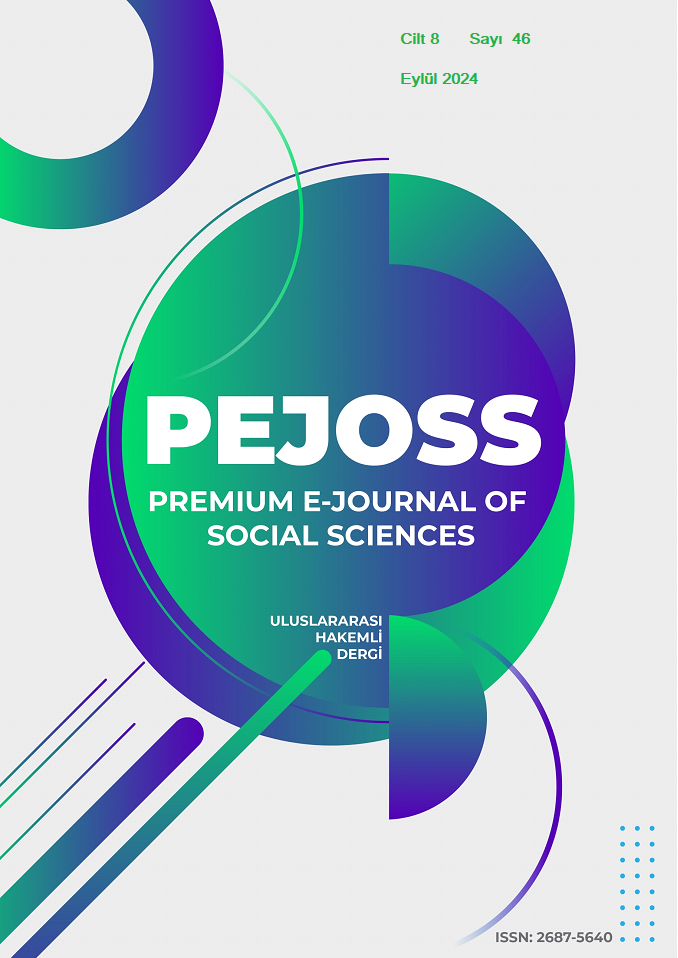Kadın Yoksulluğu ve Maliye Politikaları
DOI:
https://doi.org/10.5281/zenodo.13881484Anahtar Kelimeler:
Kadın, Maliye Politikası, Yoksulluk, TürkiyeÖzet
Dünyada yoksulluk özellikle kadın yoksulluğu COVID-19’dan sonra artış eğilimine girmiştir. İklim krizi nedeniyle bu artışın devam edeceği tahmin edilmektedir. Kadın yoksulluğunun temel nedenleri, kadınların işgücüne katılım oranlarının düşük olması, eğitim fırsatlarından eşit şekilde faydalanamamaları ve cinsiyet eşitliğinin olmamasından kaynaklanmaktadır. Çalışmanın amacı kadın yoksulluğunun dünyada ve Türkiye’deki boyutlarını araştırmak ve uygulanan maliye politikalarını incelemektir. Çalışmada cinsiyet eşitsizliğinin en fazla görüldüğü Asya ülkeleri ve Orta Doğu- Kuzey Afrika, Sahra Altı Afrika’da kadın yoksulluğunun ve kayıt dışı çalışan kadınların oranının yüksek olduğu görülmüştür. Türkiye’de ise kadın yoksulluk oranın 2023 yılı itibariyle %33 olduğu görülmüştür. Çalışmada kadın yoksulluğu ile ilgili olarak pek çok ülkenin cinsiyete dayalı bütçe politikaları uyguladığını ve bu çerçevede maliye politikası araçlarından özellikle vergiler, kamu harcamaları araçları ile kadın yoksulluğunu azaltmaya yönelik bazı politikalar uyguladığı görülmüştür.
İndirmeler
Referanslar
Azcona. G. and Bhatt. A. (2023) Poverty is not gender neutral, https://sdg-action.org/poverty-is-not-gender-neutral/
Abramovsky, L. and Selwaness, I. (2023), Fiscal Policy and Gender Income Inequality: The role of taxes and social spending, pp: 1-53, https://www.researchgate.net/publication/371947443_Fiscal_ policy_and_gender_income_inequality_The_role_of_taxes_and_social_spending
Altay, A and Aslanpay, E. (2016). Understanding Women's Poverty: An Evaluation of Turkey, Karatahda Business Writing Magazine, (4), 1-30,
Bardakçı, Ş and Oğlak, S. (2022). Gender Inequality Index and Turkey, Journal of Social Policy, 3, 71-90.
Buz, S. and Öngen, Ç. (2018). Poverty Fighting Policy in Turkey in Terms of Gender Equality, Journal of Social Sciences, 21, 321-338,
Eurostat (2024). Social Protection Statistics, Social Benefit, https://ec.europa.eu/eurostat/ statisticsexplained/index.php?title=Social_protection_statistics__social_benefits#Expenditure_on_ social_protection_benefits_by_function
Eurostat (2023). File: Figure:1 Employment rate by sex, 2023 (%, aged 20 to 64).png, https://ec.europa.eu/eurostat/statisticsexplained/index.php?title=File:Figure_1_Employment_rate_ by_ sex,2023_(%25 ,_aged_20_to_64).png
Fabrizio, S. et al. (2020). Women in the Lober Force: The Role of Fiscal Policy, p:1-42, https://dspace.ceid.org.tr/xmlui/bitstream/handle/ 1/904/ women%20labor% 20force%20imf.pdf? sequence=1&isAllowed=y
Fırat, M. (2013). Poverty in Developing Countries and Turkey, Trakya University Journal of Social Science, 15 (1),185-206
Gölçek, A.G. and Organ I. (2023). Evolution of Poverty Paradigms: A Historical and Conceptual Review, Political Economic Theory, Special Issue, 69-96,
IMF. (2020). Women in the Labor Force: The Role of Fiscal Policy, pp: 1-22, imf.org/en/Publications/Staff-Discussion-Notes/Issues/2020/02/11/Women-in-the-Labor-Force-The-Role-of-Fiscal-Policies-46237
IMF. (2018). Persuing Women's Economic Empowerment, Meeting of G-7 Ministers and Central Bank Governors, Whistler, Canada, https://www.imf.org/en/Publications/Policy-Papers/Issues/ 2018/05/31/pp053118pursuing-womens- economic-empowerment, p:1-28
ILO. (2021). How to Assess Fiscal Stimulus Packages From Gender Equality, p:1-25, https://www.ilo.org/ publications/how-assess-fiscal-stimulus-packages-gender-equality-perspective
OECD. (2022). Tax Policy and Gender Equality, p:1-52, https://www.oecdilibrary.org/docserver/b8177 aeaen.pdf?expires=1721591077&id=id&accname=guest&checksum=D81B65EB6E0E36955F1B1DD906C90824
Öztürk, M and Çetin B.I. (2009). Poverty and Women in the World and in Turkey, Journal of Yaşar Üniversity, 3(11),2661-2698,
Şener, Ü. (2009). Women's Poverty, 2009, p:1-12, https://www.tepav.org.tr/upload/ files/1271312994r5658.Kadin_toplugu.pdf
World Bank (2021), A Global View of Poverty, Gender and Household Composition, p:1-29, https://documents1.worldbank.org/curated/en/776061614181162133/pdf/A-Global-View of Poverty-Gender-and-Household-Composition.pdf
World Bank (2018). Gender Differences in Powerty and Household Composition Through the Life, Cyclehttps://documents1.worldbank.org/curated/en/135731520343670750/pdf/WPS8360.pdf, p:1-45
TURKSTAT. (2023). Women in Statistics, https://data.tuik.gov.tr/Bulten/Index?p=Istatistikzler-Kadin-2023-53675
TURKSTAT. (2023). Poverty and Living Conditions Statistics, https://data.tuik.gov.tr/Bulten/Index? p=topluluk-ve-Yasam-Kosullari-Istatistikleri-2023-53713
TURKSTAT. (2023). Social Protection Expenditures, 2000-2022, https://data.tuik.gov.tr/Bulten/Index?p =Sosyal-Koruma-Istatistikleri-2000-2022-53834
UN. (2022). Progres on the Sustainable Development Goals, The Gender Snapshot, p:1-31, ttps://www.unwomen.org/sites/default/files/2022-09/Progress-on-the-sustainable-development-goals-the-gender-snapshot-2022-en_0.pdf
UN. (2023). Development Program Annual Report, pp: 1-21, file:///Users/meralfirat/Downloads/annual-report-2023.pdf,
Yılmaztürk, A. (2016). Causes of Women's Poverty in Turkey and Methods of Fighting It, Balıkesir University Social Sciences Institute Journal, 19(36),769-796,
Yıldız, S. and Uğur, A. (2016). Gender-Sensitive Budgeting and Country Experiences, Manas Journal of Social Research, , 5(3),271-292
İndir
Yayınlanmış
Nasıl Atıf Yapılır
Sayı
Bölüm
Lisans
Telif Hakkı (c) 2024 Premium e-Journal of Social Sciences (PEJOSS)

Bu çalışma Creative Commons Attribution 4.0 International License ile lisanslanmıştır.


